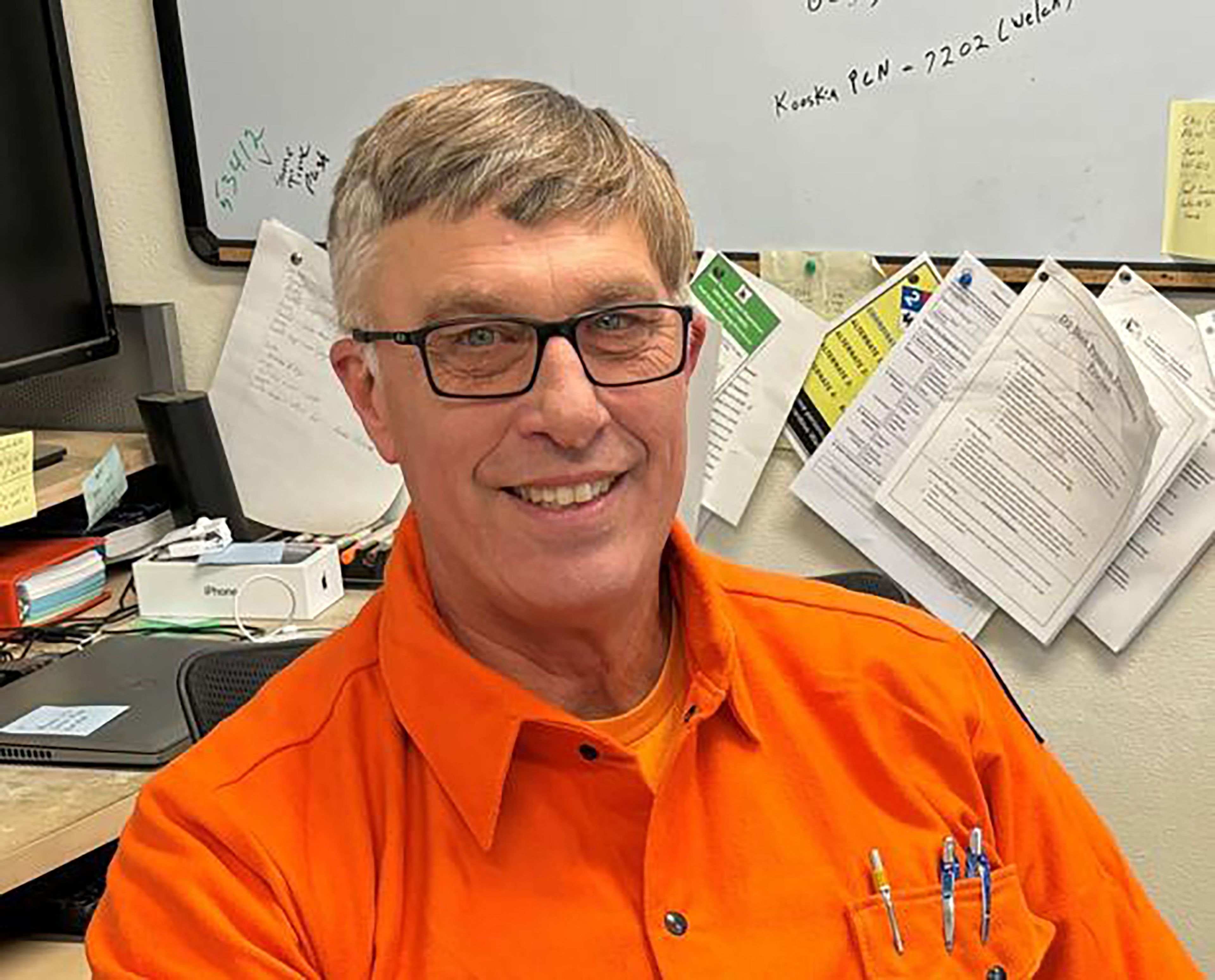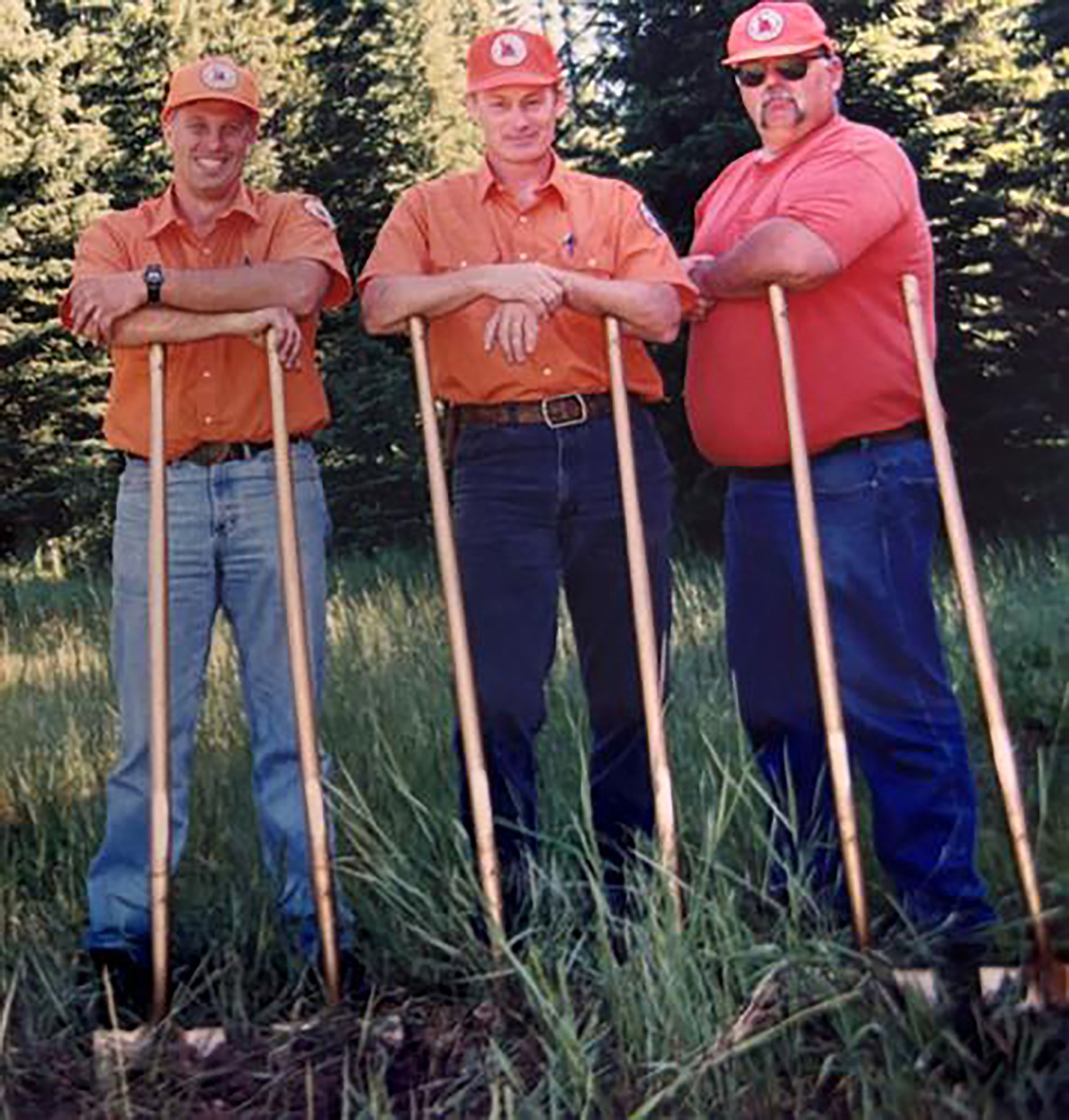Stories in this Regional News Roundup are excerpted from weekly newspapers from around the region. This is part two, with part one having appeared in Saturday’s Tribune.
———
KOOSKIA — “I was blading the road and got a little too close to the edge with the grader and sunk the tires in. So, I’m stuck there and the other guy working there was in a little truck hauling gravel to the top. I had a cable on the front of the grader, so, both of us being young and dumb, we hooked the cable up to his truck, not thinking of the consequences,” Mark Schuster recounted. “As soon as the cable got tight and it started moving, instead of coming up on the road, the back end of the grader angled down. We went along like that for about 60 to 75 feet and I’m thinking ‘Do I jump, do I stay; do I jump, do I stay?’ What we didn’t think of was if I didn’t make it, it would pull that truck down, too. I had that really warm feeling in the chest, you know, like when you’re super scared!”
Schuster, retiring supervisor of the Idaho Department of Transportation (ITD) shop and crew on Idaho Highway 12 in Kooskia, recalled a lesson learned early on in his 47-year career. The road they were on was Highway 64 between Nezperce and Kamiah, and the edge dropped hundreds of feet to the valley below.
He had planned on being a farmer at his parents’ place above Kamiah, helping his father during the summers while attending college in Lewiston. After college and marrying his wife, Jo, in 1977, he took a summer job with ITD and then became a permanent transportation technician.
He remembered the winter of 1977-78 as being one of the snowiest winters ever. He plowed the Nezperce Grade (Idaho Highway 64) to 7 Mile on Idaho Highway 162.
“There was no day off for a month,” he said. “The wind would blow the snow, and it kept coming. I plowed the same snow many times.”
Often, the fog was so thick on Highway 64 that all he could see was the ditch to know where he was.
Eventually, Schuster became such a skilled snowplow operator that he won the state competition in 2000. It was a sort of agility course where he maneuvered the plow around cones within 6 inches on either side. It included backing through them, as well.
The job he really enjoyed, he said, was making their own asphalt from powdered granite mixed with oil, which was used for paving and patching. Schuster especially liked the challenge of repairing potholes, because each one is different in size, depth and underlying material.
“It requires knowing what’s needed and getting the machine to do what you want. It’s a fun thing,” he said.
When he was supervisor of the Kooskia crew and shop, the main roads were U.S. Highway 12 to Lolo Pass and to the bottom of the Harpster Grade on Idaho Highway 13. He schedules the crew’s work and sees to their training needs.
He recounted Thanksgiving of 1995 when it snowed a couple of feet and their first female crew member, Katy Young, had been only two weeks on the job.
“She radioed me ‘Mark! Mark! The road just blew out in front of me!’ I thought, being new, that she might just be a little excited. I went up there, and an ice plug had formed on the creek above. It broke and the water that was dammed poured down across the road into the river. We could see the trees on the opposite side of the Middle Fork moving and swaying. We were on the wrong side and had to take the equipment and trucks up to Missoula and around to get back.” She was a “good egg” and an excellent employee, he said.
All the women crew members since have been a boon to them. They bring, he said, special skills in observation of details that men miss, and although not as physically strong, they complement the men to make really effective teams.
The changes Schuster has seen during the past 47 years has been the increase in tourists and the decrease in trucks.
“The number of tourists traveling through began to really increase after the bicentennial of the Lewis and Clark Expedition in 2003. Word of mouth,” he stated.
The other major change was in the ITD itself. When it began, it was patterned after the Army Corps of Engineers and had a more military-like feel. It has changed completely from being given commands to collaboration. Now things are talked over to find the best solution and to make decisions.
“I love the crew I have right now. It is the best I’ve ever had. I love the management above me. I really feel blessed in a lot of ways to have worked here. I loved to work with equipment, and I enjoy helping people,” he said. “There were many Thanksgivings and Christmases that I worked, just so others could be with their families, and that was okay.”
Mark and Jo live in the Three Rivers area and raised three sons there. Jerrod is in McCall, Jason in Coeur d’Alene, and Johnny is in Kooskia. They have seven grandchildren from 4 to 17 years old.
“It seems like it snows every Wednesday before Thanksgiving. I’m going to enjoy it this year!” he said.
— Lyn Krzeminski, The Clearwater Progress (Orofino), Thursday
Bishop blesses Angelus Center in dedication; new era for St. John Bosco Academy
COTTONWOOD — The community of St. John Bosco Academy and its supporters gathered Nov. 17, for the dedication and blessing of the newly completed Angelus Center.
Packing the facility’s foyer, the ceremony and subsequent public tour marked the culmination of a project that began with a groundbreaking in August 2021.
Bishop Peter Christensen led the event, offering words of encouragement and faith before blessing the facility.
“What a wonderful occasion. I’m glad to be here,” the bishop said, referencing the consecration of the building site two years prior. “Today we complete the work that began in 2021, to bless a finished building that stands on the ground that was consecrated in August of that year. Good to be standing here again with a completed project, and congratulations to each of you.”
Bishop Christensen praised the generosity and dedication of all who contributed to the project, noting its significance for the academy’s mission.
“The generosity and work of all involved has now come to fruition, yet our work has just begun in some regards,” he said. “Now begins the joyful task of providing our youth with an environment where their faith may be nurtured and strengthened, along with their minds and bodies.”
He concluded with a message of inspiration. “What seems impossible is not. When the time is right, the Lord will make it happen. My brothers and sisters, the time is right, right now. Congratulations — it is a delight to bless this facility.”
Funded through monetary, material and labor donations, the approximately 26,000-square-foot gymnasium and theater complex also includes classrooms and a full commercial kitchen.
Kim Frei, Angelus Center project manager, conducted a series of heartfelt toasts, recognizing the contributions of parents, benefactors, contractors, and clergy.
“Here’s to our St. John Bosco parents and benefactors who, despite the mounds of obligations of their own, never hesitate to pitch in with their own time, and their own blood, sweat and tears to create the school and finish the facility,” Frei said.
Following thanks to the contractors and tradesmen, “who put not only their skills but their heart into our little project,” she also emphasized gratitude for the divine inspiration behind the project.
“And most importantly, here’s to our all-powerful, all-loving omnipotent Triune God who loves us beyond all reason. May we never stop striving to return His love with everything we do.”
The Angelus Center is expected to serve as a hub for the academy’s educational, spiritual, and extracurricular activities, embodying the school’s mission to develop faith, intellect and community.
— David Rauzi, Idaho County Free Press (Grangeville), Wednesday










